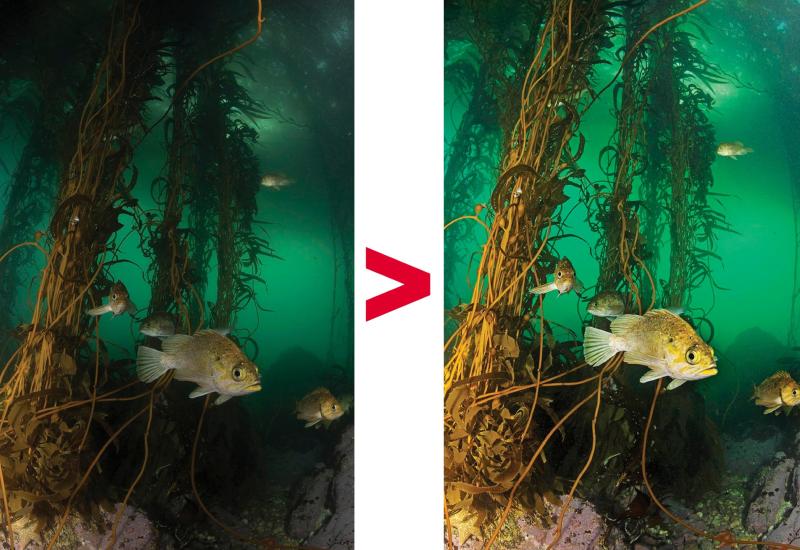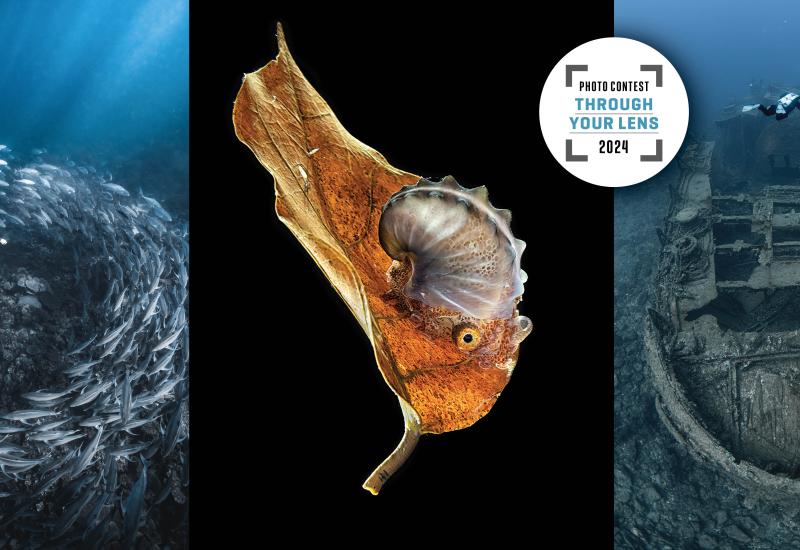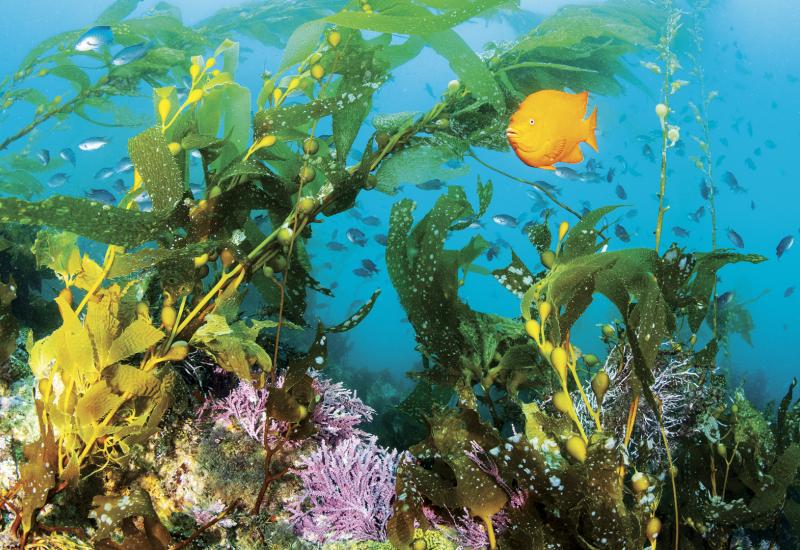Behind the Scenes: Scubazoo's Gil Woolley

Where do you live and how old are you?
I live on top of a hill in Kota Kinabalu, Sabah, Borneo, overlooking the nearby islands that form the local marine park. I am 38 years old.
How long have you been diving? What made you want to learn to dive and where did you start?
I am still a novice diver by most standards as I only started diving five years ago when I moved to Borneo. As a child I would spend hours snorkeling along the UK coast, so I don’t know why it took so long for me take the next step and get certified as a diver. Once I saw the tropical seas around Sabah though, it was only a matter of days after arriving before I was on my first ‘try-dive’ and completely smitten.
When did you start shooting underwater? Why did you start using a camera?
A long time passed between my first dive and when I first took a camera underwater. Actually, it was only about a year, but during that time I did over 250 dives. I wanted to make sure I was competent underwater before I took a camera down. This didn’t just mean getting good buoyancy, but also knowing about marine life and species identification, so I did quite a bit of leading and guiding dives to increase my knowledge. I also helped teach diving to students as it really makes you think about safety when you are looking after someone else, which lead to me feeling much more confident in my own diving. I always knew I would eventually take a camera underwater, I have been taking pictures since I got my first Praktica camera at the age of nine and have been shooting wildlife even since.
What was your first camera setup? What camera system do you use now?
I started with Nikon D200 in Nexus housing and Inon Z240 strobes and have now progressed to either the D700 or D800 in a Nauticam housing.
Underwater photographers seem to have an ability to look at the underwater world and know what sort of picture could be made, in a way that's not obvious to the non-photographer looking at the same site.
**Is that something you are born with or a learned trait? **
I believe a good photographer can spot a good picture, be it underwater or anywhere else. Just the same as a landscape photographer can look at a mountain range and know there is a great image there, so can an underwater photographer look at a coral reef and know. This may mean shooting the next day when the light is better, or waiting for the moment when the fish school is in the best composition, or many other factors. Some of these other factors do have to be learnt, such as best strobe position or knowing the behavior of a creature so you can predict when it will come into frame. So in summary, you need a mixture of both.
Variable current and a fair amount of organic material in the water column seems common in this area, how would you advise budding photographers to learn to deal with each?
The most obvious solution is practice. Practice with strobe positions and gain more experience with buoyancy in different conditions. Sometimes this isn’t possible though, especially if you don’t live near the sea. If this is the case, when on a trip, make the most of those around you. Talk to people who have dived the sites previously so you know what to expect, talk to experienced photographers and find out what they plan to shoot and how they are going to shoot it. Most of them will be friendly!
What is your most memorable underwater moment?
One of my most memorable moments happened quite recently when I was photographing around the island of Sipadan. I was hoping to get some shots of mating turtles so planned a trip during the mating season when the tides where favorable. I was lucky enough to snorkel and photograph quite a few mating pairs and learnt how to approach them without spooking them. On one occasion though I dropped in to approach what I thought was a quiet pair resting on the surface. In fact, the pair were catching a breath and a major fight was going on underwater with eight other males trying to bite and tug the male off the back of the female so they could take its place. It was thrilling to watch and the turtles took no notice of my presence, except when a couple of young males got confused and started climbing on me!
What type of photography do you prefer (wide-angle, macro, etc.)?
I prefer having the best set up for the available conditions. There is nothing more frustrating than being told you are going to a great macro location, then dropping in and finding stunning wide angle scenes with great coral coverage, but not a critter in sight. And vise versa obviously.
Any scary or funny moments underwater?
By far my scariest experience underwater was also quite amusing and certainly didn’t involve any marine life. On one of our more bizarre projects, we were working with a turtle scientist and he wanted to show fishermen that if they fitted a TED (turtle exclusion device) into their trawler net, large objects such as turtles would be expelled from the net, whilst their fish catch remained unaffected. So we decided to photograph and film the net in action to show the fishermen. Holding on for dear life to a trawler net in full dive gear, whilst being dragged along the seabed behind a boat was quite an unusual experience. We had a good safety diver crew so once we got used to being dragged along and nearly having the regs ripped out of our mouths due to the speed, it was actually quite fun! I am happy to say it was worth it as TEDs are now in widespread use across Malaysia.
Any awards or honors?
I don’t remember ever submitting to a competition, so that would be no! I have been lucky enough to have several winning images in shoot-outs though.
Where have you been published?
My images have been used in advertising campaigns, posters, numerous books (including Scubazoo’s own recent publications Natural Wonders and Sensational Seas of Sabah) and of course in magazines.
What are you proudest of?
Seeing your work in print is always nice, especially when you get paid for it! However, I was invited to attend a shoot-out in Timor Leste to help raise awareness of the diving there and to increase tourism. Visiting a place where not many people had been due to recent troubles and diving new sites was very rewarding, plus my photos won a few awards.
Are there any underwater photographers you admire and why?
In a previous life I worked as a picture editor and creative director for a photographic agency in England. During my many years there I was lucky enough to work with some of the very best underwater photographers around, including Howard and Michele Hall, Doug Allan, Norbert Wu, Richard Herrman and David Fleetham. This was back in the days of film and although back then I appreciated the aesthetics of the work they produced, it was only when I started diving myself that I realised what technical geniuses they really were. On top of their great photography, they were also explorers and adventurers, discovering and photographing many places previously unheard of.
What advice do you have for beginning photographers?
If you are easily frustrated, expect instant results and want to earn a good pension, you might want to consider something else. If you are doing it for the love of it, find a way to spend as much time underwater as you can to practice and learn from your mistakes.
Where are you going next?
I haven’t dived in my local marine park for months, so a trip there is long overdue. I am very lucky to have this option so close. Long term, I want to find a way to fund a trip to Reunion Island as a friend there says the diving is outstanding.
For a gallery of Gil's images click HERE.










